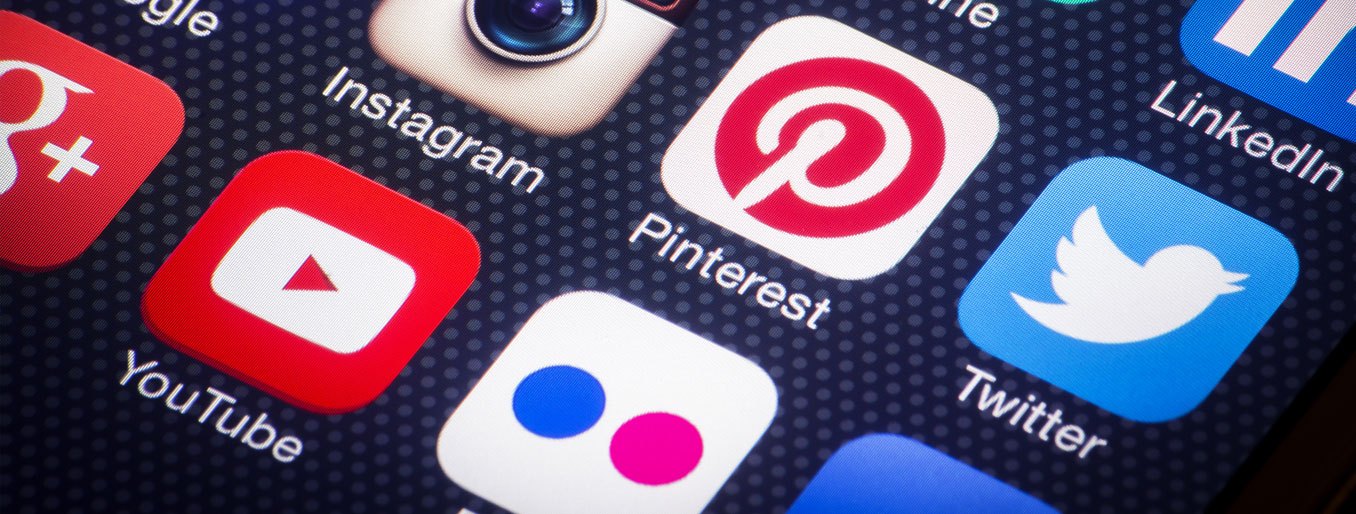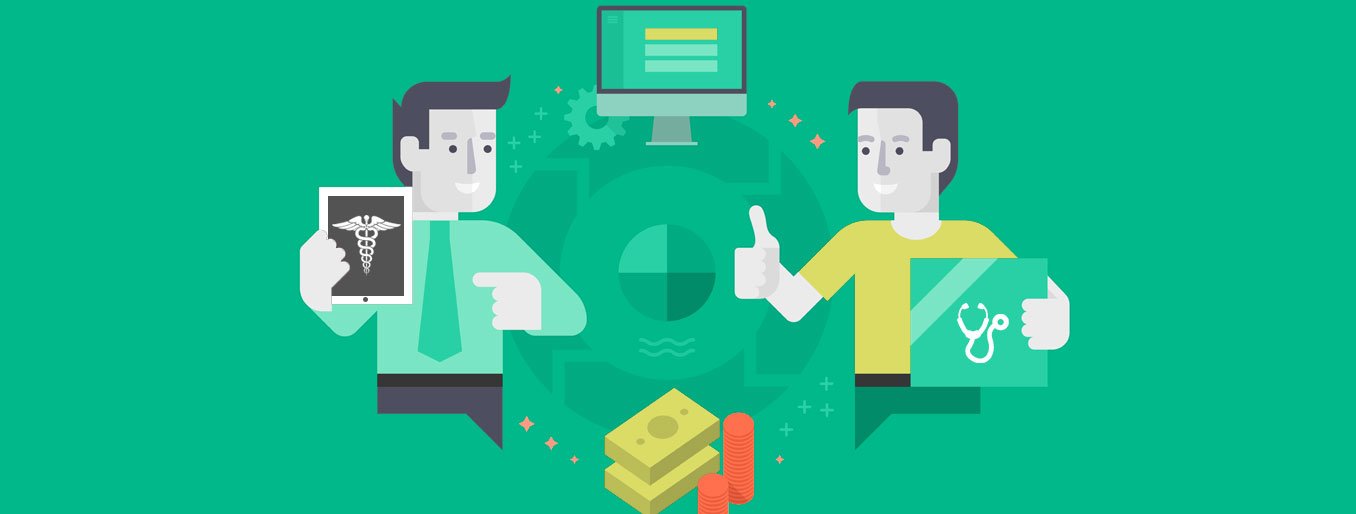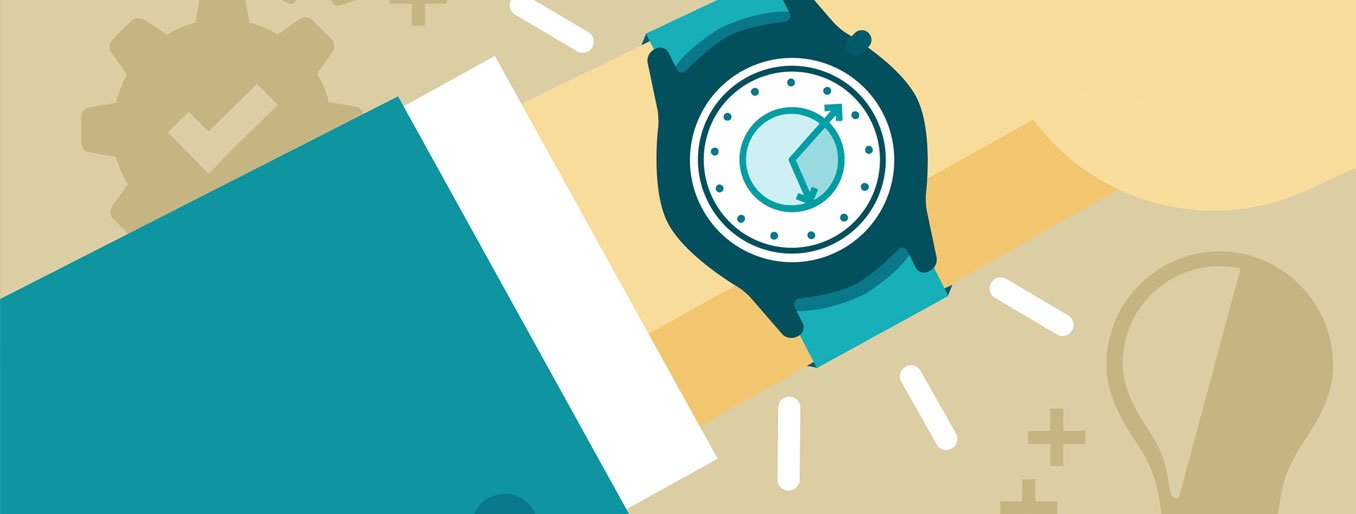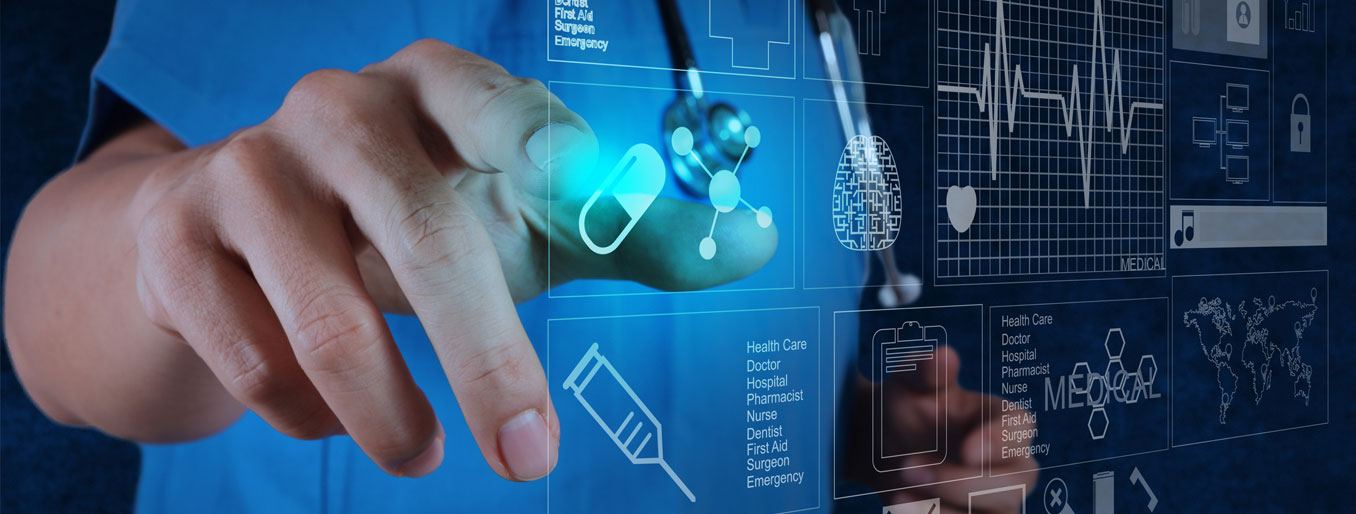The importance of social media in marketing has been discussed quite extensively. Its influence is quickly being appreciated and the role it plays in healthcare is no exception. In a world where people are more likely to look up general health queries online rather than ask a health professional, it is pertinent to understand the scope of social media in healthcare. This is particularly true in a generation of digitally connected patients. The applications of social media are numerous and adopting it would mean that your hospital and practice is moving with the times.
We give you 35 compelling statistics that provide the real picture; numbers that imply the need for every health care professional, hospital, and organization to be actively involved in social media.
1.Social media improves the quality of care patients receive, say 60% of doctors
Increasingly more doctors are using social media for healthcare delivery: Unlike what we may be have been led to believe, the transparent nature and convenience of health-care communication on social media is responsible for patients receiving care of better quality. Another reason it improves the quality of care is due to the fact that patients are looking to get real-time responses to health queries online, as many health organizations have taken to creating Facebook/Twitter pages to provide health tips. Also, since social media allows for quick communication without having to visit the doctor’s office, it has helped improve the accessibility of healthcare. View source.
2. Facebook is the most popular – in a nationwide study of 1500 hospitals in the USA with a presence online
Health providers should have a Facebook presence, at least: Among the social media platforms, Facebook’s leadership in online popularity over others is to be noted so as to channel time, money and efforts of a medical organization in the right direction to derive the maximum benefits. Social media targeting determines where the organization makes its most impact. View source.
3. 19% of all smartphone users have a minimum of at least one health app on their phone
Many health organizations are investing in health apps to speak to their patients: Healthcare institutions stand a lot to gain from having a health-based mobile application, based on their individual specialties and orientation. While this not feasible for every organization, it emphasizes the importance of having a strong focus on mobile in reaching out to your client, irrespective of the size of the organization. View source.
4. Social media affects their choice of hospital, doctor, and medical facility, say 41% of people.
Social media has slowly replaced Yelp and other rating sites: This implies that social media is a tool that can magnify both positive and negative opinion and this makes it vital for a medical establishment to be concentrating on the medium, so as to bring in new patients and to retain existing ones. Patients discuss a wide range of topics and it is up to each establishment to use this platform wisely to their benefit. View source.
5. The most popular activity of 60% physicians on social media is to follow their colleagues’ shares and discussions
Social media is also for peer engagement: A lot of social media users are non-actively involved. They might not be posting or commenting actively, but would be reading the content posted online. Doctors are no different. They may not always be active in a discussion, but still see the importance of social media in information exchange, often sharing information they read online. View source.
6. The probability of someone in the age group between 45 to 54 taking to social media for health-oriented discussions is half that of people in the age group between 18 and 24.
Online health discussions popular with millennials and baby boomers: This means that people between 18 and 24 adopt social media and other forms of online/mobile communication for healthcare solutions. This makes it significant for doctors, medical professionals and hospitals to be present and engaged in these conversations, on these platforms. It also is important to note that it is not just the younger generation that engaging is these discussions online.
7. In the professional networking front, 31% of professionals in healthcare take to social media.
The audience likely to engage with doctors are already online: This statistic reveals social media’s benefits and the multitude of applications that are possible. Networking is a key aspect of one’s professional development. The reach offered by social media when aided with the right targeting helps a great deal. Professional development has been experienced by healthcare professionals using channels like Twitter, LinkedIn and Twitter. View source.
8. The probability of an adult sharing his/her health information online with (1) another patient is 30%, (2) with a hospital is 43% (3) with a doctor is 47%, and 32% and 38% respectively, on sharing with a drug company and a health insurance company.
Health providers cannot deny changing patient behavior any longer: Almost 50% of patients being willing to communicate by sharing health information with their providers online is perhaps the biggest indicator of the potential of digital health. The fact that many patients are currently doing this through various mediums like instant messaging, email or video calls is extremely promising for health providers. View source.
9. In the 18-24 age group, 90% trust medical information that is shared by others on social media
Most of the health information available online is incorrect: This perhaps highlights the biggest need for health providers to be active on social media. Information shared by non-medical users on social media can be misleading and dangerous to other users. Actively engaging with these users by providing the right health information and dispelling myths can go a long way in gaining dedicated patrons. View source.
10. When requesting an appointment via social media, 49% of candidates expected a quick reply (within hours).
Patients have high expectations from online engagement: Surprising as this may seem, patients are not only comfortable connecting via social media but also have high expectations for online engagement with their providers. This means of connecting with the doctor online is already changing the way patients book appointments and follow-up with their doctors. View source.
11. 31% of healthcare organizations have written guideline specifications for social media
Social media engagement goes beyond just sharing articles: Many organizations are beginning to see the importance of having a social media presence. To ensure uniformity in their online interaction and have it function as an extension of their brick-and-mortar establishment, many providers are establishing their social media strategy for collaborative care. View source.
12. 5 billion people to use mobile phones by 2017
Mobile internet usage is responsible for active users on social media: Healthcare establishments must take the cue from this finding and give importance to mobile users above all; a nod to the new age of connected devices. Healthcare institutions ought to be armed with a social media plan to reach out to these users. Also, it is speculated that Wi-Fi and mobile-connected devices will be generating as much as 68% of all internet traffic by 2017 and it is imperative to cater to this vast majority. As social media becomes more accessible, so will the health information that it offers. View source.
13. Regarding health-related conversations on Facebook, 28% of conversations support a particular medical cause and 27% conversations are that of users commenting on their own experiences
Facebook isn’t only about social interaction, it is now about healthcare interactions too: This provides insight into Facebook user behavior. Sharing important medical views and also communicating with patients who are on the road to recovery are more becoming increasingly common on social media. It has now become a platform for users to get immediate redressal to their health queries. Also, creating like-minded communities for a particular health condition fosters support and encouragement to many patients with chronic illness. This is evidenced by numbers that support the fact that community healthcare has been proven to help health outcomes. View source.
14. Among parents, 22% use Facebook and 20% use YouTube on their quest on finding medical solutions online. Regarding the ‘non-parents’, 14 % use Facebook while a 12% use YouTube for the same
New parents are more likely to use online resources to get health information immediately: In addition to the 18-24 age group, a large number of parents, particularly new parents are using social media for support with parenting and newborn care. There are social media communities exclusively dedicated to pre-natal, postnatal and paediatric care that helps expectant mother and new parents through helpful videos and infographics on what to expect. View source.
15. People with chronic conditions were affected by the information they found on social media; regarding diets, exercise and the choice of physician, say 40% of the people studied
Health providers need to identify where they should intervene: Social media can be quite influential in how users perceive information and make decisions. This is also true of their health decisions. Healthcare professionals and health providers ought to make use of this by using the medium in a productive way, thereby playing an active role in the development of a person’s medical opinion, which is often influenced by unverified information online.View source.
16. 54% of patients are at ease with their providers using online communities for better treatment of health conditions
Community healthcare is best exemplified on social media: As long as such online communities are watched and regulated by experts, most patients would trust information that is being gathered from other people with similar experiences. This also points out the fact that people find information on the internet useful, even if it is regarding something as critical as their own health.
17. With respect to social media, 23% of drug manufacturing companies have not addressed privacy and security
Social media needs to be used, but wisely: This is an important need in any healthcare interaction online. The reason that most providers have hesitated to have an online or social media presence is largely due to concerns about privacy and confidentiality of communication. Preventing sensitive information from being available to the public via social media without intention is something that every agency needs to be mindful of. It also highlights the fact that many healthcare companies are still only grasping the scope of social media. Establishing guidelines on the usage of social media by the organization and its staff is key.
18. In the USA, 26% of all hospitals are involved in social media
Meaningful patient engagement can be more than a patient portal: A hospital that isn’t using social media is losing out on their clients. Social media is vital for medical establishments to be interacting with their patients – existing and new. This is regardless of what can or what cannot be revealed on social media on the establishment’s behalf. View source.
19. Popular online information sources most accessed for healthcare information: WebMD -56%, Wikipedia – 31%, websites of health magazines- 29%, Facebook -17%, YouTube – 15%, patient communities – 12%, Twitter – 6%. 13% took to blog(s) and 27% used none of the listed
Hospital-managed health information is still the most trusted online: This provides an insight into where the bulk of online health information comes from, highlighting its credibility, value, and reliability. This also indicates that most social media channels are catering to health information seekers. While there are still unverified sources of health information, like Wikipedia, most others are community driven. Therefore, there is a clear need for healthcare organizations to have an active social media presence to drive meaningful engagement. View source.
20. 66.67% or 2/3 doctors use social media for professional needs, mostly resorting to open forums instead of the online physician exclusive communities
Providers are getting involved in discussions online, wherever they may be: While social media does receive flak for not being health-specific, the numbers beg to differ. Doctors choosing to discuss health information on open forums rather on healthcare specific ones is perhaps due to the extent of participation and the number of participants in such groups. View source.
21. The activity of doctors and their posts on social media are more likely to be trusted over sources like groups, by 60% of social media users
The surest way to reach out to new and existing clients are through social media: Doctors are highly respected. Which is why when they share their opinions online, they are valued more and followed more seriously. This is the reason why doctors should boost their online reach as a professional in healthcare and take to dispelling common myths surrounding health conditions, discuss new technologies and help simplify health care for patients on social media. View source.
22. 76000 – The rise in the number of podcast listeners of Mayo Clinic after they took to social media
Quick, easily consumable health information is always popular: A very clear statistic on how social media increases a health care organization’s messaging reach. The organization in question had a podcast streaming which was nurtured to grow by the effective use of social media – by sharing information and also by interacting with the online audience. This is a good example to be adopting, as in this digital age, any organization without an online presence would effectively be left behind. View source.
23. 119% increase in YouTube traffic to hospital sites year over year
Videos about health information goes viral too: Marketing using videos translate into online lead generation a lot more effectively than other strategies as it has a human element to it, emphasizes the facility’s values quicker and also gets the point across successfully. Videos can pack a lot of key information and can be shared and made ‘viral’ on social media, which often grows its reach and viewership while being useful for the organization’s marketing efforts. Hospitals should be adopting such strategies for their social media engagement. View source.
24. In a 2012 study, 23% of Twitter users had joined 6 months before, 30%, less than a year ago and 25%, less than 2 years before
140 characters can go a long away in patient engagement: Twitter continues to draw new users by impressive numbers, gaining thousands of new users every day. The ease at which information is conveyed within 140 characters is perhaps what makes it so popular. Healthcare information that can be summarized in such a manner would find great favour with patients as it makes it more palatable for them.
25. 70% of consumers prefer Facebook to connect with brands; 9% choose Twitter
Take your brand to where your audience is: The figures could be attributed to Facebook’s very nature of being visually attractive and being user-friendly. Facebook can be used by healthcare professionals and hospitals to generate interest and to help start meaningful conversation on their forums.
26. 33.33 or 1/3 of social media users are effectively ‘silent’.
Do not be disheartened by less engagement on social media: It may seem like not everyone engages on social media, but there is a silent audience who use these channels to obtain information. Though these users aren’t actively involved, they are likely to do so if compelled. It goes without saying that these ‘silent’ members could be potentially valuable for every healthcare establishment.
27. Social media is being handled by their marketing department, say 82% of respondents
A lost opportunity for Patient Engagement and Patient Education: Many hospitals have social media accounts for marketing but don’t use it for patient engagement – this is overlooked and under-utilized and could effectively be hurting their business. Therefore, it is imperative to keep your audience engaged through regular participation. View source
28. Parents with a child at home owning multiple wearables – 49%; non-parents – 24.
Wearable devices are likely to make patients engage more on social media: The adoption of wearables and activity trackers shows that patients are more conscientious about their health. Users also readily share statistics from their wearables on to their social media accounts to keep themselves motivated or to challenge their friends. Consumers are evolving already and aren’t opposed to sharing their health data- an important behavior that health providers need to recognize. View source
29. Information sourced via social media influences how they go about tackling their health issues, say more than 40% of patients.
Social media greatly influences how patients make health decisions: This makes it obligatory for hospitals and medical professionals to be putting out accurate, educational material online that would help those looking for online solutions. Credible information posted also throws light over erroneous posts shared by non-medical users, thereby improving the online credibility and reach.
30. In the age group 45-64, 45% share health related material online; 56% are likely to engage.
Baby boomers and senior citizens use social media for help with health problems: This shows that baby boomers (and not just millennials) are actively involved in online healthcare which are vital in forming their personal opinions regarding their care. They are fairly tech-savvy and are looking to increase their accessibility to specialist care on platforms and channels that are familiar to them, which they use every day, such as social media. It also means that valuable content released online would be shared by a good number of users increasing the organization’s reach. View source
31. 50% of all healthcare apps are available to consumers to download for free
Healthcare quality is now not necessarily proportional to its cost: This shows that many healthcare providers are already making good use of digital health technology and mobile technology through free apps further add to their online involvement, besides their social media interactions and web presence. Health apps boost user involvement and make it easier to facilitate interaction between providers and users. View source
32. 86% of patients did a health-related online search before making a doctor’s appointment
Everything, including matters related to health and healthcare, is Googled: This is fairly well-established considering the number of review websites that have become popular among patrons. It demonstrates the importance of putting out credible information online and also the importance of having a strong online following and reputation, as a prospective client is now more likely to encounter your healthcare institution’s online platform even before an actual visit. The initial impression in such cases goes a long way. View source.
33. 72% of Internet users are also active social media users
Growth of the internet has led to the growing popularity of digital health: A healthy percentage of internet users are active on social media and this translates to more people being involved in the online healthcare platforms every year. Social media is a resource that every professional and organization in healthcare must tap into. Healthcare organizations need to understand that a majority of their clients are online and that rather than market themselves through traditional means, they need to be reaching out to them on these platforms. View source
34. Social media utilization of hospitals went from 79% in 2012 to 91% in 2013
You are missing out if you aren’t already on social media: The quickest way to connect with your audience is to engage with them online. Most hospitals have already understood that and hence are using social media as a marketing channel. In order to stand a chance with your competition, you will need to have an effective social media strategy. View source.
35. Revenue from healthcare apps in 2015 – $392,000,000
Patients are not averse to spending money for better engagement: This is just an example of the revenue potential of the new-age consumer. Like the choice of doctors and hospitals, users are seeking to find the best. This is now possible to do with the internet, which influences where they spend their money, be it for apps or even just for the best user experiences. Social media is, therefore, one of the channels that allow providers to effectively project themselves and their healthcare delivery platforms. View source
Conclusion
Social media has effectively evolved from being just an add-on to your business to being a powerful and influential channel of communicating with clients. It has myriad possibilities, from generating new business to ensuring client satisfaction through meaningful engagement. In an age where information is consumed at a rapid rate and where patients are looking for answers more quickly, health organizations have a responsibility to rise to the challenge of evolving with changing patient behavior. Or they risk falling behind.




